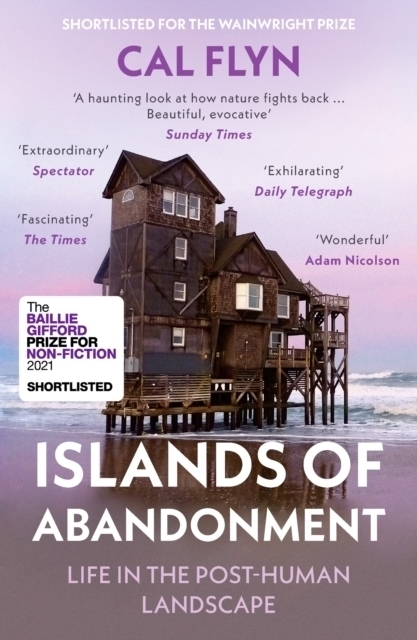📚 Finished listening to Islands of Abandonment: Life in the Post-Human Landscape by Cal Flyn.
In this book, Cal Flyn visits the places that humans have been, oftentimes ravaged , and left in order to explore the nature of “life in the post-human landscape”.
…we will travel to some of the eeriest and most desolate places on earth
There are many such places. Some she covers include:
- The Chernobyl exclusion zone - the site of the infamous 1986 nuclear disaster, and its nearby towns.
- The abandoned settlements of the Scottish Highlands.
- The empty villages of the Greek Islands of the Aegean
- The now desolate industrial areas of Detroit.
- Poveglia Island, a former quarantine station and mental asylum.
- Kolyma, Siberia, previously home to forced labour camps
- The Demilitarized Zone between North and South Korea
- The Usambara Mountains in Tanzania, where imperialists planting species from their native country overran the indigenous species of the area.
- The huge slag heaps of West Lothian, Scotland, a legacy of the production of oil.
- Place à Gaz in France, where unused chemical weapons were burned after the first world war.
- Various Soviet collectives of times past.
- Arthur Kill, New Jersey, where toxic chemicals from industrial processes cause harm to anything or anyone that lives there.
However well it is written - and it does contain many surprisingly poetic sentences, beautifully evoking the strange environments under discussion - one might think that this would be nothing other than a book of despair, a dystopia of what we did to our planet.
But that’s not really the case. For, as she documents, in many of these places nature has found a way to to re-emerge, to live once again, sometimes even to thrive.
Humans have given up and fled the area, and may never return - or at least most humans, in some of these places a few people remain, for better or worse. But the rest of our planet’s organisms have not give up so easily.
This should be a book of darkness, a litany of the worse places in the world. In fact, it is a story of redemption: how the most polluted spots on Earth - suffocated by oil spills, blasted by bombs, contaminated by nuclear fallout or scraped clean of their natural resources - can be rehabilitated through ecological processes,
This does not necessarily things have reset to what was there before, before humans tore the place apart. Apart from anything else, tragically, many species of life have been lost for good. What emerges from these post-human places is often something new, a different ecosystem, organisms that thrive in or managed to adapt to the mess we left behind. These places aren’t permanently destroyed, forever destined to be places without life. Instead we see regeneration, a natural re-wilding of a type, untouched by human planners.
And sometimes in a form that might even save us from ourselves - witness the regrowth of forests in previously abandoned Russian farmland that may apparently in theory, though having developed simply because humans left, lead to them meeting their Kyoto Protocol commitments.
This might give us hope that whatever we do to our planet, we will not truly kill it. If we continue to behave in the depraved and irresponsible way that we seem to have so far, it’s possible that we might wipe out humanity, sure, or at least render our lives to something more like how she tells us that the residents of Slab City live, but planetary life would go on.
